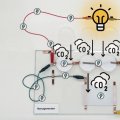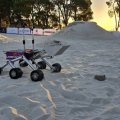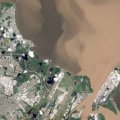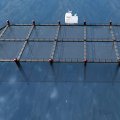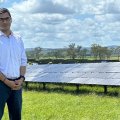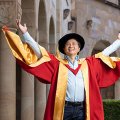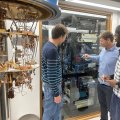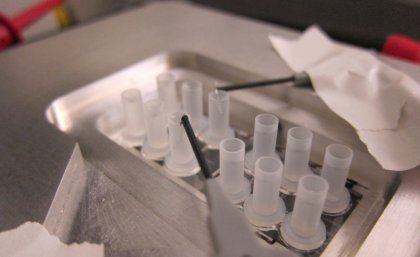
An international team of engineers and biologists has developed a new technique that could lead to improved infection diagnosis for cystic fibrosis patients.
The technique to separate bacteria based on small genetic differences was developed by scientists from The University of Queensland, Belgium’s Ghent University and Massachusetts Institute of Technology in the US.
It uses differences on the surface of bacterial cells, often due to small genetic differences, to distinguish between closely related strains.
UQ’s Australian Centre for Ecogenomics postdoctoral research fellow Dr Dana Willner said the technique would help distinguish between innocuous strains of Pseudomonas aeruginosa and those which could cause harmful infections in patients with cystic fibrosis.
“Our colleagues at MIT made a microfluidic device that’s essentially an inexpensive plastic chip etched with hourglass-shaped channels into which bacteria can be injected,” she said.
“When we applied an electric current to the chip, the bacteria reacted based on their surface properties, by clumping together or moving in different ways through the channel.
“These variations in surface properties are related to the way the bacteria behave in our bodies, and may indicate antibiotic resistance or the ability to form biofilms, which are sticky clumps of cells.”
Pseudomonas aeruginosa is a common bacterium usually harmless to humans, but it forms biofilms in the lungs of cystic fibrosis patients, causing excess production of mucus and difficulty breathing.
“Mucoid strains of Pseudomonas aeruginosa are genetically very similar to non-mucoid strains and this new technique can distinguish different strains in approximately five minutes, much faster than current diagnostic techniques which can take more than 24 hours,” Dr Willner said.
“Although it hasn’t yet been tested with patient samples, we believe it can be developed into a portable, disposable system for clinical use to rapidly detect the presence of mucoid strains which can indicate more severe diseases.
“Rapid detection could lead to quicker diagnosis and more prompt treatment for patients.”
The research was initiated by Professor Korneel Rabaey, now at Ghent University, while he was a Senior Research Fellow at UQ’s Advanced Water Management Centre.
He said the sensitivity of the technique allowed for a range of applications.
“Further variations will allow us to look inside cells, and, for example, find out how much oil is inside an algal cell for biofuel production,” Professor Rabaey said.
Australian Centre for Ecogenomics Director Professor Philip Hugenholtz said the technique would be useful for understanding the connection between the surface properties of a bacterium and the genes it expressed.
“This technique is a powerful new tool for rapidly isolating and studying bacterial strains with subtly different surface properties that we can then sequence to help pinpoint the genes responsible," he said.
“The success of this collaboration between engineers and biologists shows the benefits of working across disciplines to address important challenges.”
The research was funded by a collaborative grant between MIT and UQ and conducted at UQ’s Advanced Water Management Centre, the Australian Centre for Ecogenomics and MIT’s Mechanical Engineering Laboratory for Energy and Microsystems Innovation.
It has been published in the journal PLoS ONE: http://www.plosone.org/article/info%3Adoi%2F10.1371%2Fjournal.pone.0076751
Media: Professor Philip Hugenholtz, (07) 3365 3822 or p.hugenholtz@uq.edu.au

